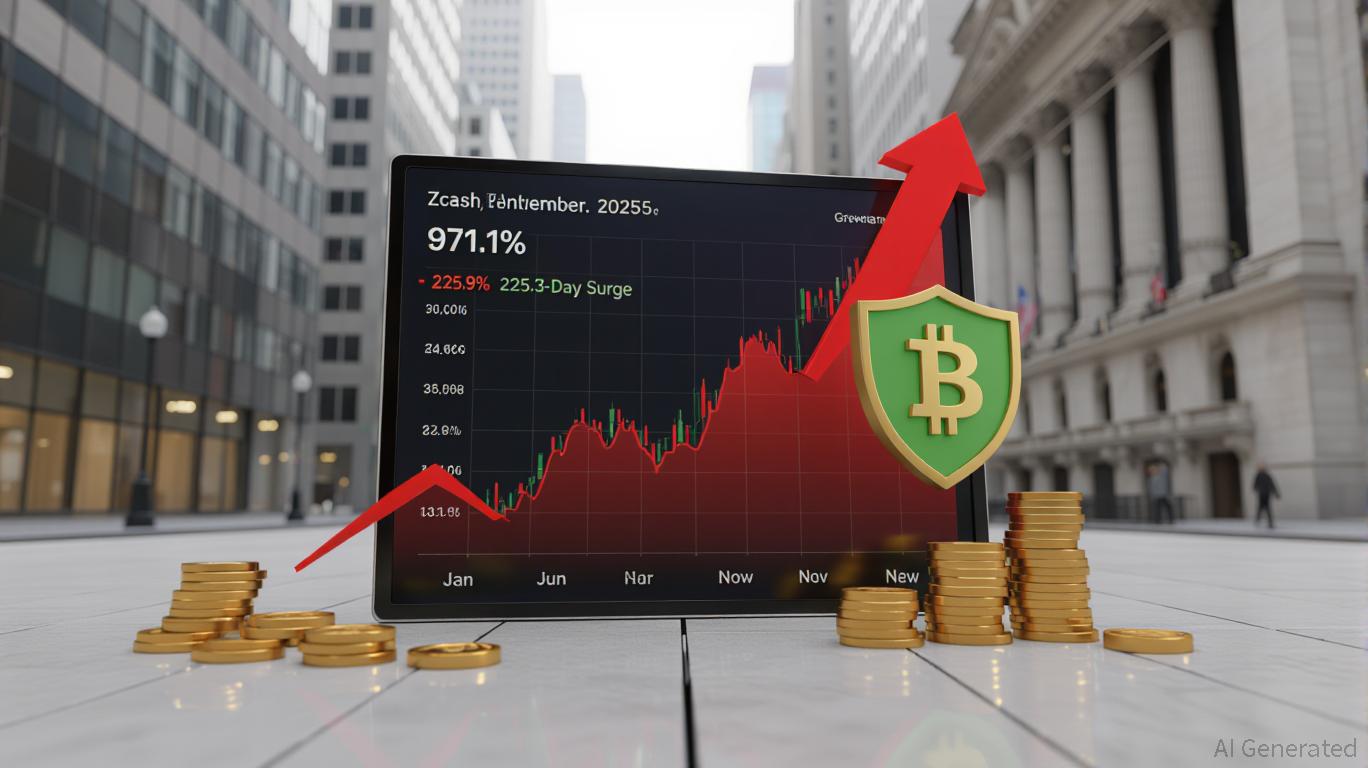YFI rises 2.69% amid technical momentum and latest corporate funding news
- Edgewater Wireless (TSX-V: YFI) issued 595,026 shares to settle $0.05-$0.075/share debt obligations, triggering a 2.69% 24-hour price surge. - The move aligns with Q3 2025 market trends but reflects YFI's specific capital restructuring rather than broad sector momentum. - Technical analysis shows short-term rebound within a 12-month -38.58% downtrend, raising trader interest near key resistance levels. - Equity-based debt settlement conserves cash but dilutes shareholders, prompting backtesting of tradin
On November 7, 2025, YFI experienced a 2.69% increase over the previous 24 hours, reaching $4914. This represents a 4.53% gain over the last week and a 4.28% rise over the past month. However, despite this recent momentum, the asset has declined by 38.58% over the last year. The latest price action appears to align with a significant financing update from a Canadian technology company.
Edgewater Wireless Systems Inc. (TSX-V: YFI) has fulfilled its interest payment obligations on unsecured debentures issued in September 2022 by distributing a total of 595,026 common shares, priced at $0.05 and $0.075 per share. This settlement, approved by the TSX Venture Exchange, is classified as a related-party transaction under securities law. The company opted to issue shares instead of cash for interest payments due on December 1, 2024, and March 1, 2025.
This action reflects broader financial patterns seen in the stock market during the third quarter of 2025, when many firms across various industries reported earnings, formed strategic alliances, and initiated share buybacks. Nonetheless, the recent uptick in YFI’s price seems mainly attributed to the company’s capital structure announcement rather than general market sentiment or trading activity.
From a technical standpoint, YFI’s latest movement suggests a short-term recovery within a prevailing downward trend. The 2.69% daily uptick, though relatively small, has brought the asset closer to significant resistance points identified in recent months. This has renewed interest among market participants, especially following the company’s choice to use equity financing for its debt commitments.
Using equity to cover interest payments is a typical tactic for companies facing limited access to capital, particularly in technology or high-growth industries. This method helps preserve cash while meeting financial responsibilities, though it can dilute existing shareholders. While the immediate effect on share price is often noticeable, the longer-term outcome depends on the company’s ability to maintain growth and generate value.
Backtest Hypothesis
To assess the potential returns of trading strategies centered on earnings releases and capital structure news, a systematic backtesting process can be employed. This would analyze historical data from January 1, 2022, through November 6, 2025, focusing on companies that announced similar equity-based debt settlements.
The premise is that a buy signal may be generated on the announcement date if the market views the move as financially sound or indicative of strategic change. A sell signal could then be set after a predetermined holding period, such as 30 days, to capture any price movement resulting from the market’s reaction.
The backtesting process would involve selecting relevant stock symbols, compiling a database of earnings and financing events, applying the trading criteria, and evaluating results using measures such as annualized return and Sharpe ratio. These findings would shed light on the effectiveness of incorporating capital structure news into quantitative trading models.
Disclaimer: The content of this article solely reflects the author's opinion and does not represent the platform in any capacity. This article is not intended to serve as a reference for making investment decisions.
You may also like
Stellar News Today: XLM Battles at $0.2705—Major Players and Sellers Face Off at Crucial Resistance
- Stellar's XLM token saw volatile trading on Nov. 7, with price consolidating near $0.2702 after hitting key resistance at $0.2777 amid surging institutional volume. - Coordinated institutional buying of 2.5M and 1.5M tokens reversed bearish momentum, defending $0.2663 support while confirming $0.2777 resistance through 45.09M-token volume spikes. - Market remains divided as XLM struggles to break above $0.2815, with analysts warning renewed selling pressure could accelerate declines below $0.2709 amid mi
Microsoft's investment in AI encounters doubts from investors amid a week-long decline
- Microsoft shares fell for seven consecutive sessions, marking its longest losing streak since 2011, driven by AI spending skepticism and market rotation. - The selloff erased $350B in market cap despite strong Azure growth (40% YoY) and $77.77B Q1 revenue, highlighting investor focus on long-term AI ROI. - Analysts cite $34.9B AI capex, regulatory risks, and Australia refunds as challenges, contrasting with Apple's 0.9% gains amid reduced AI dependence. - Strategic moves like the $9.7B IREN AI deal and "
Zcash (ZEC) Price Rally: Could This Signal a New Era for Privacy Coins?
- Zcash (ZEC) surged 971.1% in 2025, reaching $409, driven by technical upgrades, regulatory shifts, and institutional adoption. - Privacy coins' market cap rose 80%, with Zcash and Dash hitting multi-year highs amid stricter global regulations. - Grayscale's $85M Zcash Trust and innovations like shielded transactions highlight privacy as a premium asset in crypto. - Regulatory challenges persist, but 73% of privacy coin users prioritize anonymity, with 24% of new wallets institutional. - Zcash's flexibili

